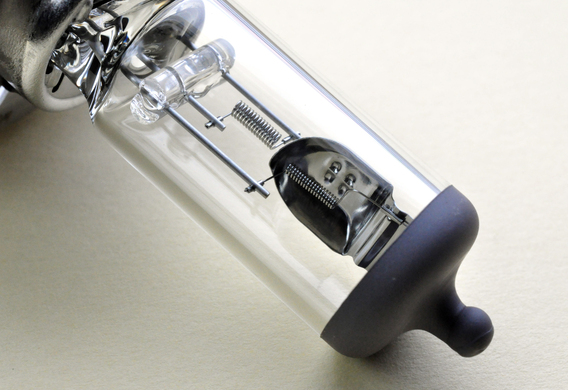
History
With the introduction of the xenon headlamps, gas-filled and halogen lamp technologies are required. Xenon lamps were distributed in the middle of the twentieth century and were used for projectors. Such lamps were used as vehicles in 1991. It is difficult to establish who first started to manufacture xenon headlamps: one information is by Philips, according to the other -Bosch.
Device
The Xenon lamp looks like a glass bulb. Inside it is a mixture of inert gases composed of xenon and metal salts. There are also two electrodes in the bulb. A voltage pulse (about 25000 V) shall be applied on the electrodes to incinerating the arc between them. The burning lamp requires a lot of smaller-85 volts. Actually, the discharge between the two electrodes is necessary to cause the gases to glow.
There are also so-called bixenon headlamps. They are capable of emitting not only the passing beam or the driving beam or both. There are two types of devices. In the first case, the bulb shall be driven by electromagnets (in different lamps, the movement is either up and down, or forward and rearward), with two types of illumination produced. In the second, between the lamp itself and the lens is a flap that adjusts the luminous flux, thereby changing the parameters of the radiation.
A special control unit is installed on the vehicle equipped with xenon headlamps. It provides the lamps for them, while the state electrical equipment can't handle it.
In general, the intensity of the light source is characterized by a colour temperature. For example, the Sun has a temperature of 5000 K, xenon lamps-4300 K, and halogenioses only 2800 K. The spectra of the luminance of the xenon lamps is closer to the light of the sun, that is, the daylight. Therefore, the colour of the xenon-new headlamps is slightly bluish, and ordinary halogenates are yellowish.

Advantage and disadvantages
The dignity of the xenon lamps is their durability. Their life is about six times greater than that of halogenus, and is approximately 3000 hours. Thus, these lamps are inoperable after three or four years of use, while the "halogens" burn every half of the year.
Another advantage of xenon headlamps is that they significantly better cover the road in the rain and fog. In addition, xenon, unlike halogen, is much better dissipated and therefore less dazzling by drivers of other cars.
On top of everything, the xenon lights are slightly different from the rest of the power source. For example, a halogen lamp requires a minimum of 55 W, while the xenos need only 35W. The intensity of the xenon beam is twice as strong. Low power consumption affects such a domestic fact as pollution of headlamps. The fact is that, with the long light effect of the headlamp, its glass is heated. On the hot glass, the road mud is better dried, and it is more difficult to wash it accordingly. Xenon lamps do not allow the headlamp to be reheated or cracked.
However, in addition to the obvious advantages, xenon lamps have some drawbacks. The main minus of "xenon" is the high price. The price is mainly affected by the need to install an additional electrical unit. The lamps themselves are worth a little more expensive than the others. All things are changing only in pairs, because the light of the lamp is changing during the operation, and if one is new and the other one is old, the light will be different.
Another factor influencing the price is the need to install automatic correction of the headlamp and the bleach. The presence of these devices can protect other drivers from dazzling by the powerful Xenon.







